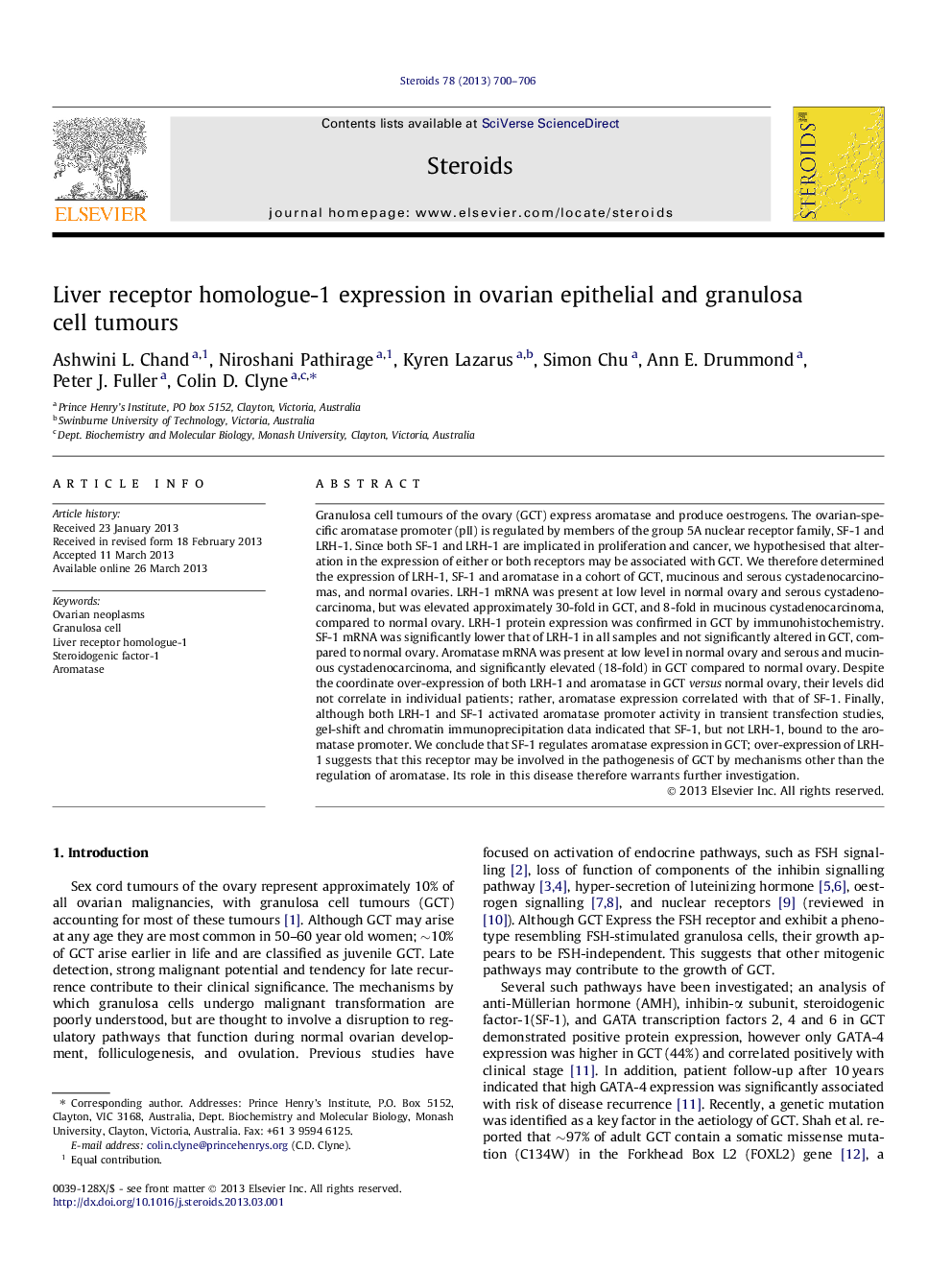| Article ID | Journal | Published Year | Pages | File Type |
|---|---|---|---|---|
| 2028019 | Steroids | 2013 | 7 Pages |
•The molecular pathology of granulosa cell tumours of the ovary (GCT) is unknown.•LRH-1, SF-1 and aromatase were expressed in granulosa cell tumours (GCT).•LRH-1 and aromatase were up-regulated in GCT versus normal ovary.•SF-1 bound to the aromatase promoter and stimulated its expression.•The role of LRH-1 up-regulation in GCT warrants further investigation.
Granulosa cell tumours of the ovary (GCT) express aromatase and produce oestrogens. The ovarian-specific aromatase promoter (pII) is regulated by members of the group 5A nuclear receptor family, SF-1 and LRH-1. Since both SF-1 and LRH-1 are implicated in proliferation and cancer, we hypothesised that alteration in the expression of either or both receptors may be associated with GCT. We therefore determined the expression of LRH-1, SF-1 and aromatase in a cohort of GCT, mucinous and serous cystadenocarcinomas, and normal ovaries. LRH-1 mRNA was present at low level in normal ovary and serous cystadenocarcinoma, but was elevated approximately 30-fold in GCT, and 8-fold in mucinous cystadenocarcinoma, compared to normal ovary. LRH-1 protein expression was confirmed in GCT by immunohistochemistry. SF-1 mRNA was significantly lower that of LRH-1 in all samples and not significantly altered in GCT, compared to normal ovary. Aromatase mRNA was present at low level in normal ovary and serous and mucinous cystadenocarcinoma, and significantly elevated (18-fold) in GCT compared to normal ovary. Despite the coordinate over-expression of both LRH-1 and aromatase in GCT versus normal ovary, their levels did not correlate in individual patients; rather, aromatase expression correlated with that of SF-1. Finally, although both LRH-1 and SF-1 activated aromatase promoter activity in transient transfection studies, gel-shift and chromatin immunoprecipitation data indicated that SF-1, but not LRH-1, bound to the aromatase promoter. We conclude that SF-1 regulates aromatase expression in GCT; over-expression of LRH-1 suggests that this receptor may be involved in the pathogenesis of GCT by mechanisms other than the regulation of aromatase. Its role in this disease therefore warrants further investigation.
